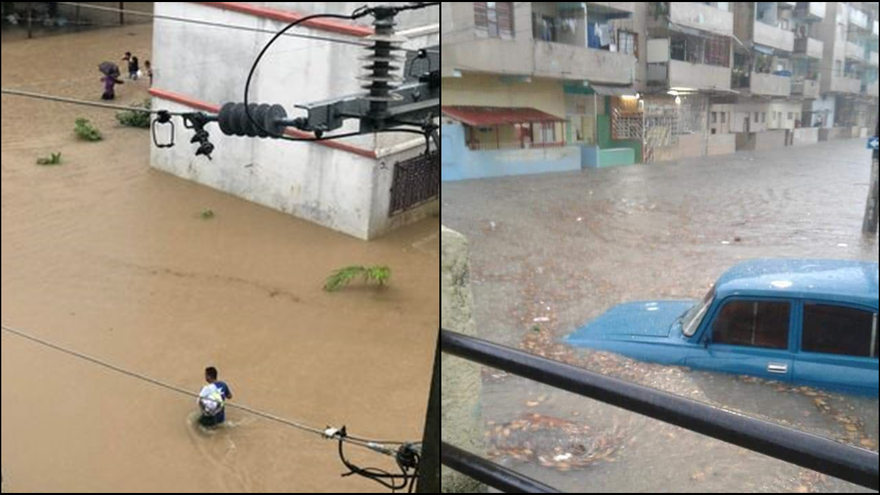
![]() 14ymedio, Havana, 3 June 2022 — A resident of Pinar del Río fell into a swollen creek in the district of Diez de Octubre and is reported missing by local authorities after heavy rains that mainly affected the west and center of the country.
14ymedio, Havana, 3 June 2022 — A resident of Pinar del Río fell into a swollen creek in the district of Diez de Octubre and is reported missing by local authorities after heavy rains that mainly affected the west and center of the country.
According to what neighbors told the official media, the man “didn’t manage to get out of the water,” and agents of the Ministry of the Interior and neighbors are searching for him.
Several residential areas, both in Pinar del Río, as well as in Havana, Sancti Spíritus and the special municipality of Isla de la Juventud, have been flooded with water by the rains associated with an extensive area that covers the northwest of the Caribbean Sea and western Cuba.
The climatic phenomenon is linked to the low-pressure zone that moves slowly over the southeast of the Gulf of Mexico and has caused the evacuation of families in several territories, falling trees, landslides and overflowing rivers. Interruptions in electricity service are also reported in Pinar del Río, large areas of Artemisa, Havana and other provinces.
In the Cuban capital, neighborhoods and areas near the Plaza de Cuatro Caminos have been affected, an area that normally reports flood problems and where neighbors, in the last few hours, are living with water above their knees.
The corner of Infanta and Amenidad is seriously affected by the rains, and the water even covers part of the vehicles parked nearby. The same panorama is experienced in the lower areas of Centro Habana, especially in the neighborhood of Los Sitios, very close to the El Pontón Sports Center.
According to the latest report from the Institute of Meteorology of Cuba, the territories with the highest record of rainfall are the weather station of Embalse Cuyaguateje in Pinar del Río with 176.0 millimeters, followed by the INRH Municipal Delegation of Isla de la Juventud with 160.0 and the Jarahueca Telecorreo station located in Sancti Spíritus with 156.5.
A month ago, the Institute of Meteorology recalled that June is considered the rainiest month of the year in Cuba. “A considerable part of the accumulated precipitation occurs associated with rainy events of several days duration, which occur mainly in the first twenty days of the month.”
He then anticipated that “the precipitation depends on the influence of migratory systems in the tropical zone, such as tropical storms and low pressure systems and their important interaction with mid-latitude systems,” while recalling that this month “the period of high thunderstorm activity” begins.
This Wednesday, June 1, the new tropical cyclone season in the Atlantic began, which will close on November 30, and in which up to 17 cyclones are expected to form, of which nine could reach hurricane status.
With this perspective, the Forecast Center of the Institute of Meteorology has predicted an 85% chance that one of these hurricanes could affect Cuba in the coming season.
The official institution called for attention to the persistence of rainfall, due to the saturation of soils mainly in low-lying and poorly drained areas.
The new cyclone season is favored by the presence of warmer than normal sea temperatures in the tropical strip of the North Atlantic and the Caribbean during the first months of this year, according to observations by Cuban meteorologists.
📸 La Habana bajo intensas lluvias este viernes https://t.co/tQiKYHN4yO pic.twitter.com/fWyAtspSFP
— 14ymedio (@14ymedio) June 3, 2022
Translated by Regina Anavy
____________
COLLABORATE WITH OUR WORK: The 14ymedio team is committed to practicing serious journalism that reflects Cuba’s reality in all its depth. Thank you for joining us on this long journey. We invite you to continue supporting us by becoming a member of 14ymedio now. Together we can continue transforming journalism in Cuba.
